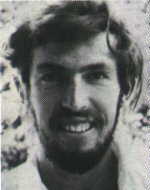Hess, Eitan (“Tani”)
Their son was the firstborn of Rafael and Esther. He was born on the 18th of Elul 5707 (August 18, 1947) in the Galilee kibbutz, where he was sick, and the natural beauty he absorbed from the first days of his life gave him a strong love for Israel and nature. He was a good student and loved by his teachers and friends, and when his parents moved to Tel Aviv, he continued his studies at the Dan School in Shikun Dan and at the ” Alliance “in Ramat Aviv Eitan was a member of the youth movement” Mahanot Haolim “as an apprentice and as a guide, and he was able to plant his love for Israel in the hearts of his students, He was a strong boy and an excellent athlete and played for the Hapoel-North soccer team, he was a great swimmer and a jogging instructor, he read books in the field of knowledge of the country and was interested in the philosophy of Judaism. He joined the IDF in late 1965 and was assigned to a Nahal unit, and after several courses he was appointed commander of the Mei Ami outpost in the Ephraim hills. In this capacity, too, he continued to deal with the knowledge of the land and to give his soldiers love for the land. When she visited a Miami Jewish delegation that adopted the place, Eitan did not ask for television or radio receivers, but rather cabinets to display the rich collection of insects, potsherds and flowers he collected. After his discharge from the regular service, he studied at the Avshalom Institute for the Study of the Land of Israel and was accepted to Tel Aviv University, the Department of Jewish History and the Department of Archeology. His love for nature and transcendence was also expressed in the place he chose for his wedding ceremony – the high and high cliff of Arbel. The house he had built and furnished with his own hands and in which he gave vent to his developed art instinct. Eitan, who was a son, an exemplary husband and father, was kind and helpful to anyone in need. During his weekend trips with his family, he frequently photographed Israel’s landscapes and spent the last two years of his life working on a book that he called “in those days and in this time.” For this purpose, he collected photographs of sites in Eretz Israel from the eighteenth and nineteenth centuries and placed pictures of the same sites in front of them as they appear today. He served his reserve duty to the satisfaction of his commanders, and one of them even noted that he was “a good officer, with a great deal of professional knowledge, who knows how to run his department efficiently. On the 8th of Av, 5772 (July 19, 1972), Lieutenant Eitan fell in the line of duty and was laid to rest at the military cemetery in Kiryat Shaul, where he placed a pregnant wife and a son. He was named after him, and his family published a book in his memory “Ways to Tell Eitan.”
